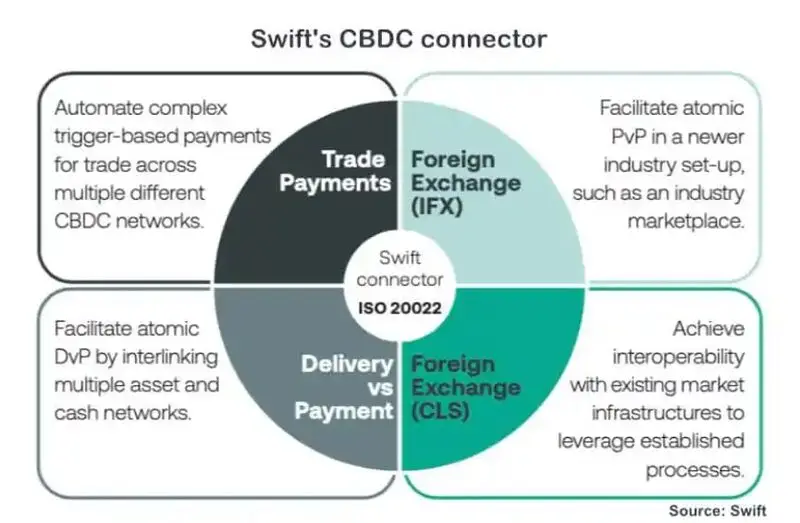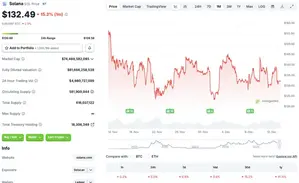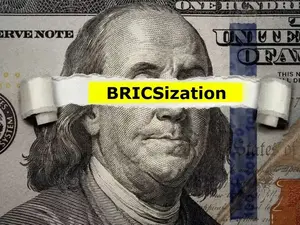SWIFT’s CBDC market developments reveal an intense competition between traditional financial infrastructure and, well, blockchain innovation that’s happening right now. SWIFT plans to launch its CBDC (Central Bank Digital Currency) platform within 12-24 months, while Ripple’s XRP Ledger (XRPL) already provides central banks with proven cryptocurrency technology for digital currency deployment, and also positioning itself ahead in the de-dollarization race at the time of writing.
🚨 BREAKING: SWIFT CONFIRMS CRYPTO GOES LIVE 11/2025
— King Solomon (@IOV_OWL) May 12, 2025
SWIFT processes $150T+/yr.
✅ Settlement Place = DLT Wallet
✅ Cash Account = DLT Wallet
✅ Network Fees = Gas
✅ Oracles = Trusted Pricing
✅ UTI = Tokenized Tx Sequencing
Implications for $XRP / $HBAR & Utility Networks pic.twitter.com/Fdbvg4tGWk
Also Read: Morgan Stanley Endorses Ripple as Viable SWIFT Alternative for Banks
How SWIFT & Ripple’s XRP Ledger (XRPL) Are Shaping the CBDC Market, Cryptocurrency Growth, and De-dollarization

SWIFT’s CBDC Market Timeline and Strategy
SWIFT’s head of innovation Nick Kerigan confirmed the SWIFT CBDC market timeline, announcing ambitious plans to productize their platform. The trials involved 38 global institutions over six months, and also proved the system’s capacity for complex digital currency operations right now.

Nick Kerigan stated:
“We are looking at a roadmap to productize (launch as a product) in the next 12-24 months. It’s moving out of experimental stage towards something that is becoming a reality.”
The platform demonstrated interoperability between different countries’ CBDCs regardless of underlying technologies, processing over 750 transactions across various use cases including digital trade and also foreign exchange payments.
Also Read: Global Financial Authority IIF Endorses XRP as Swift Alternative for Payments
Ripple’s XRP Ledger (XRPL) Leading Cryptocurrency Innovation

Ripple launched its CBDC Platform in May 2023, built on XRP Ledger (XRPL) technology that handles tens of thousands of transactions per second. The platform provides central banks complete sovereignty over their digital currencies while also leveraging XRPL’s energy-efficient consensus protocol.
The Ripple CBDC platform operates on a private ledger based on XRPL’s core technology, offering enhanced functionality for cryptocurrency management. Colombia’s central bank selected Ripple for pilot projects, demonstrating real-world CBDC implementation success at the time of writing.
De-dollarization and SWIFT CBDC Market Competition
They are working to de-dollarize their economies by using blockchain and cryptocurrency technology at this time. BRICS Pay is meant to challenge old financial systems by helping member countries use CBDCs to settle cross-border trades without relying on the US dollar.
Also Read: Chinese Digital Yuan vs SWIFT: China’s 7-Second Payments Shake Up Global Finance
Russian President Vladimir Putin addressed the dollar’s political weaponization:
“The dollar was used as a weapon. It is true. If they don’t let us work with it, what else should we do? We should seek other alternatives.”
As countries try to use other currencies, the SWIFT CBDC market competition is heavily affected. At present, the cryptocurrency field provides alternatives to traditional international trade through correspondent banking.

Whether SWIFT or Ripple’s XRP Ledger (XRPL) wins will decide which standard the international CBDC system adopts. While SWIFT relies on past banking links, Ripple currently provides the especially valuable ability to allow various types of digital payments.
Both services must handle problems caused by market ups and downs, security challenges and changing regulations while showing why they are better than what is currently used. SWIFT CBDCs will be successful if technological development is matched by compliance with rules and trust in the institutional environment.
Also Read: Expert: Ripple’s SWIFT-Like Replacement Could Send XRP to $15K






